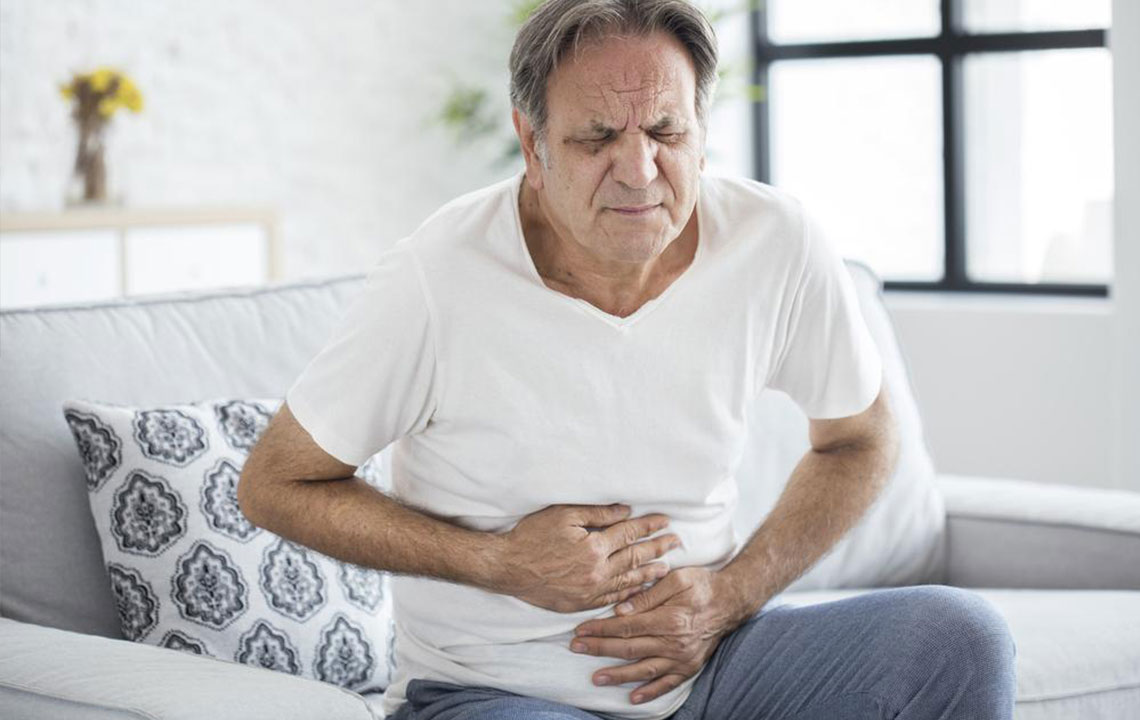Various Reasons Causing Pain in Lower Abdomen

Lower abdominal pain is very common in both men and women. The level of pain varies from patient to patient. Various reasons can cause abdomen pain. Diagnosing the reason for abdominal pain on your own is difficult. It is only a doctor who can identify the problem correctly.
Find out below the most common reasons that lead to lower abdominal pain:
Constipation: This is a common ailment. It is caused when the digestive system finds it difficult to evacuate the bowels. Thus, expansion of the intestine with waste materials causes abdominal pain. The pain is typically felt in the lower right abdominal area.
Appendicitis: People between the age group of 11 and 40 years suffer from this ailment primarily. A sharp abdominal pain is felt on the lower right side accompanied by high fever, vomiting, and loss of appetite.
A hernia: A hernia causes pain on the right side of the lower abdomen due to the weakening of the muscles of the abdominal wall. People feel pain in the upper thigh and groin area as well.
Testicular Torsion: Twisting and coiling of the testicle can lead to intense pain radiating to the lower abdomen. This pain accompanies vomiting tendency, nausea, and testicular pain as well. Pain is sporadic but becomes persistent as the condition worsens. Many patients also experience pain below the belly button.
Kidney Stones: Pain caused due to kidney stones is generalized and severe and is usually concentrated on the back side. This is because the stones are attempting to push along the kidney. A kidney stone is caused due to dehydration, certain diets, processed sugar and excessive consumption of animal protein.
Food Poisoning: Contaminated food containing parasites and bacteria leads to intense abdominal and stomach pain. Other symptoms include nausea, vomiting, diarrhea. It can take as long as 48 hours for the pain to subside.
Irritable Bowel Syndrome (IBS): This ailment causes sporadic muscle cramping in the large and small intestine resulting in the pain and urge to go to the bathroom. Diarrhea, constipation, and mucus stools are caused when suffering from this condition accompanied with pain. IBS is a chronic condition which can be treated and cured with proper care and diet.
Crohn’s Disease: This is an inflammatory bowel ailment that causes abdominal pain, diarrhea, and weight loss. It is distinguished from ulcerative colitis as it shows swelling in the lower right region of the abdomen of the size of a grapefruit. The tenderness varies from mild to extreme.
Diverticulitis: Patient suffering from this issue will have outpouchings in their colon. These are little pockets that accumulate fecal matter causing pain due to inflammation.
Diabetic Ketoacidosis: This is one of the complications faced by people suffering from type 1 diabetes. It is associated with extreme thirst, breathlessness, nausea, fatigue, frequent urination and weakness. Patients also suffer from generalized abdominal pain.
Cystitis: This urinary tract disorder is caused due to bacterial infection of the bladder. Symptoms include burning during urination, lower abdominal pain, cloudy and dark urine, increased frequency of urination and bloody urine.
Ectopic Pregnancy: This happens when a fertilized egg is placed in the fallopian tube instead of the uterus. This is an issue because the fallopian tube is not conducive to handle a fetus that is growing. The tube can even rupture and cause severe abdominal pain in such condition.
Placental Abruption: This is a condition where the placenta detaches itself from the uterine wall suddenly. This is a very dangerous complication since this attachment is a must to ensure supply and nutrients and oxygen to the baby. This can happen in the third trimester and comes with constant, severe and worsening lower abdominal pain.
Miscarriage: Miscarriage can cause pain in the lower abdomen. Miscarriage is referred to the condition when the fetus is lost before the 20th week. Symptoms include back pain, cramping, vaginal bleeding, and spotting, passing of tissue or fluid from the vagina.
Salpingitis: This causes inflammation in the fallopian tubes of a woman. It can make the patient suffer from severe abdominal pain.
Cancer: When the lower side of the abdomen hosts a cancerous growth, it results in sharp or mild pain in the lower abdomen.
Cholecystitis: This swelling and inflammation of the gallbladder cause pain in the lower abdomen.
Intestinal Obstruction: When the contents of the intestine are blocked that pass the lower bowel is known as intestinal obstruction. This causes severe abdominal pain.
While some of the causes of the lower abdomen are harmless and get better after a short period, there are a lot more that warrants immediate attention. Thus, if you experience abdominal pain which refuses to get better within a short while, it is important to see a physician and run the required tests to diagnose the issue accurately.


